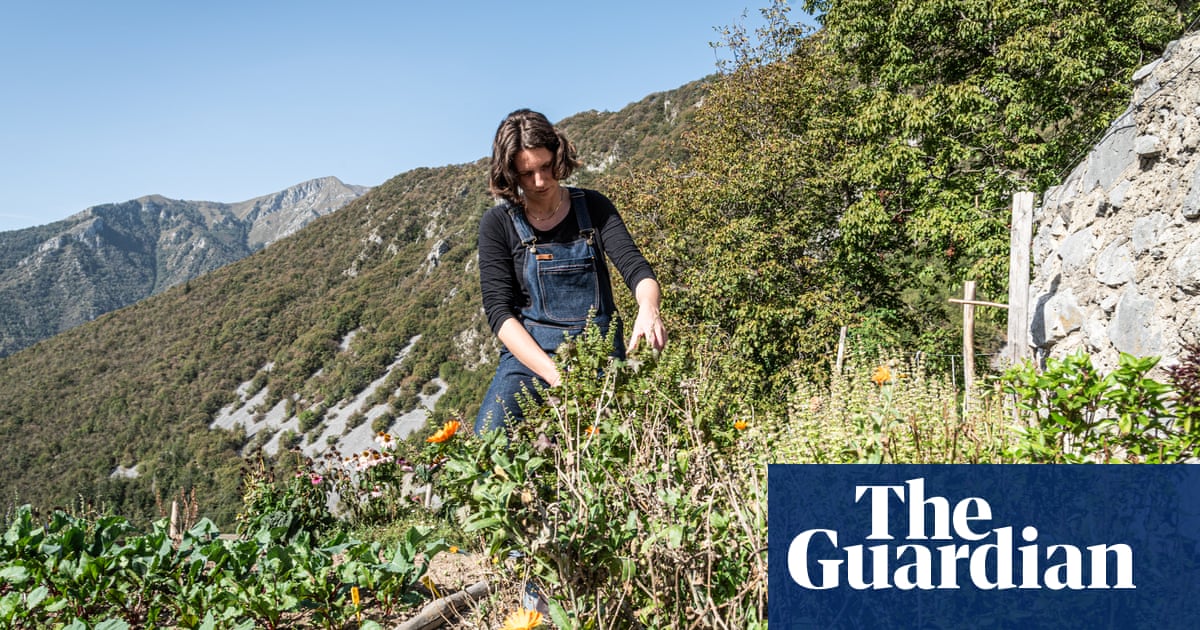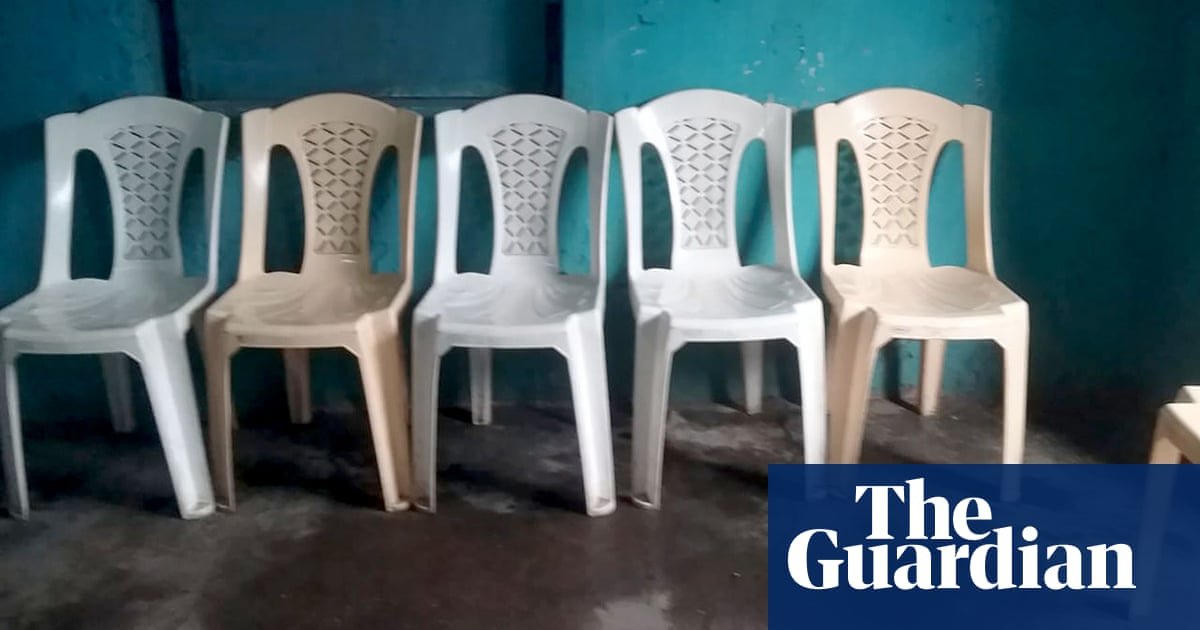
Olivia Cleveland misses her farm – the chickens, the donkeys, the smell of the dirt and the way the wind would blow at three o’clock in the afternoon. For almost three years, Cleveland, 30, lived on a farm in north-east Alabama, owned by her then husband. She spent her days doing hard physical labor, cultivating land she deeply cared for, but she owned none of it on paper. So when Cleveland and her husband divorced in 2021, she lost everything.
Since then, Cleveland has spent the last two years rebuilding and working towards buying her own farm in her home state of Tennessee.
But Cleveland, now the south-east organizing manager at the nonprofit National Young Farmers Coalition, still can’t afford the average price of farmland in Tennessee, which has increased by 10% in the last year. Fifteen, 10 or even five years ago, Cleveland says, she could have afforded land. “But in 2023, it is very difficult to find that,” she says.
In April, Cleveland finally found a small cottage and an acre of land where she plans to grow her own food.
Across the country, the cost of farmland is the highest it has been since the 1970s. From 2021 to 2022 alone, value per acre increased by 12.4% and it now costs on average $3,800 an acre, according to the United States Department of Agriculture (USDA). In some states it’s even higher: last year farmland in California averaged $12,000 an acre. These record-high prices are making it nearly impossible for young and emerging farmers to break into the industry. With the current generation of farm owners nearing retirement age and over 40% of the country’s farmland – that’s about 400m acres (162m hectares) – expected to change hands in the next decade, there are thousands of young farmers ready to take over. But with limited financial resources and farmland prices continuing to rise, many can’t access land to grow food.
According to a survey conducted by the National Young Farmers Coalition, finding affordable land to buy is the number one challenge for farmers under 40. Limited access to capital, student loan debt and healthcare costs make it increasingly challenging for young farmers when trying to build a farm.
The majority of young farmers are also first-generation farmers, so they don’t have access to farmland or resources that may have been passed down by a family member, says Carolina Mueller, the coalition manager at the National Young Farmers Coalition.
Since the 2008 financial crisis, insurance companies, hedge fund managers and developers increasingly saw agricultural land as a stable investment with high returns amid a volatile market. They started buying farmland at prices the average farmer couldn’t compete with, according to a report by the National Family Farm Coalition (NFFC). These investments, along with high prices for commodity crops like wheat and soy, have helped contribute to a 75% rise in cropland price over the last 15 years.
The Teachers Insurance and Annuity Association of America, an investment fund that manages pension funds for public employees of various institutions, for instance, owns an estimated $4bn worth of farmland in the US. And Bill Gates is now the largest private farm landowner in the country, owning more than 250,000 acres (101,000 hectares) across dozens of states.
Jordan Treakle, the national program coordinator at the NFFC, a coalition representing farmers, ranchers and advocacy organizations in 42 states, says that with so much land expected to change hands in the next decade, it’s essential that it is passed to young farmers instead of investors or developers.
“If 40% of agricultural land falls into corporate ownership as a speculative asset class or as a way to park money – rather than that land being used to support rural economies in our local food systems – I think that has big implications for national security, for our food security as a nation and the vitality of our local rural economy,” he says.
Investors may not consider how their ownership will affect communities or the environment, says Dãnia Davy, the director of land retention and advocacy at the Federation of Southern Cooperatives. Small-scale farmers, on the other hand, often prioritize stewarding land for the next generation.
For farmers like Cleveland, land is much more than just an asset. “To me, any opportunity to steward that land, whether it be through gardening, or farming, or living, is an honor,” she says.
This is a view shared by many young farmers, 97% of whom say they use sustainable growing practices like cover cropping, drip irrigation and perennial planting. However, establishing these methods and building the necessary infrastructure can be very difficult without long-term, secure access to land. These practices take time to establish, but they are essential to preserving the viability of soil and other resources, Mueller says. Secure land access doesn’t just benefit farmers, it benefits the climate.
“I think that’s what makes it so frustrating that farmland is being seen as a commodity,” Mueller says.
As buying land is out of reach, many turn to leasing farmland as a more affordable option.
According to the USDA, 40% of farmland is now leased, and the majority of leased land is owned by “non-operator landlords”, meaning a person who is not actively involved in the farming, like a financial investor. A non-operator landlord and a farmer frequently have different values for the farm, often making it difficult for a farmer to establish sustainable growing methods. It can also create an unreliable dynamic between farmers and landlords.
Nyema Clark, 35, the director of Nurturing Roots, an urban farm in Seattle, Washington, has been leasing land from a non-operator landlord, Bethany United Church of Christ, for the last eight years. On 1 March, she was notified with little warning that she had 30 days to vacate the land.
In an email statement to the Guardian, Bethany United Church of Christ said Nurturing Roots did not give the required 90-day notice to renew its lease before it expired. It also said the church has been renting to Nurturing Roots at a “well-below market rate”, which it estimates has resulted in a $300,000 subsidization for the farm.
“We have put a tremendous amount of effort into helping Nurturing Roots. We wish Nurturing Roots well,” the church said in the statement.
In February last year, Nurturing Roots made an offer to buy the land from the church, but it declined.
For nearly a decade, Clark says she has worked to build a space where community members can grow food using organic practices, so she’s devastated at the thought of losing the land she worked so hard to cultivate.
“We have been taken advantage of for generations. And so what I’m going through, I just feel like, wow, this is a trauma that lives on,” Clark says.
Clark is referring to a long history of land loss among Black farmers through discriminatory practices which still exist today. Between 1910 and 1997, Black farmers lost approximately 90% of the farmland they owned. To this day, Davy says Black farmers continue to be exploited by local-level credit lenders, making it difficult for them to access and maintain ownership of land. Today, 97% of farmland is owned by white people. These systemic barriers make it disproportionately challenging for young Black farmers to access land and capital.
While owning land may be ideal for many young farmers, private ownership isn’t the only route to secure land access, Mueller of the National Young Farmers Coalition says. Community ownership and urban farm co-ops are increasingly being used across the country.
Agrarian Trust is an organization working to decommodify pieces of land and place them in the control of local communities. Through this model, called the “agrarian commons”, land is owned by a community board and leased to farmers at an affordable rate for as long as the state will allow, which in most cases is 99 years.
This gives farmers the opportunity to build the infrastructure they need without the fear of losing access to their land, says Kristina Villa, the communications director at Agrarian Trust, who also uses the agrarian commons model to lease her own farm.
This year could shape the future of land ownership for young farmers, since the farm bill, a package of legislation passed every five years, is scheduled to be voted on. Organizations across the country – including the NFFC, the Agrarian Trust and the National Young Farmers Coalition – say this is a critical moment for Congress to increase equitable land access for young farmers.
“So much funding right now is spent on technical assistance or training for farmers and growers. But, like, people know how to farm,” Villa says. “They just need land.”












